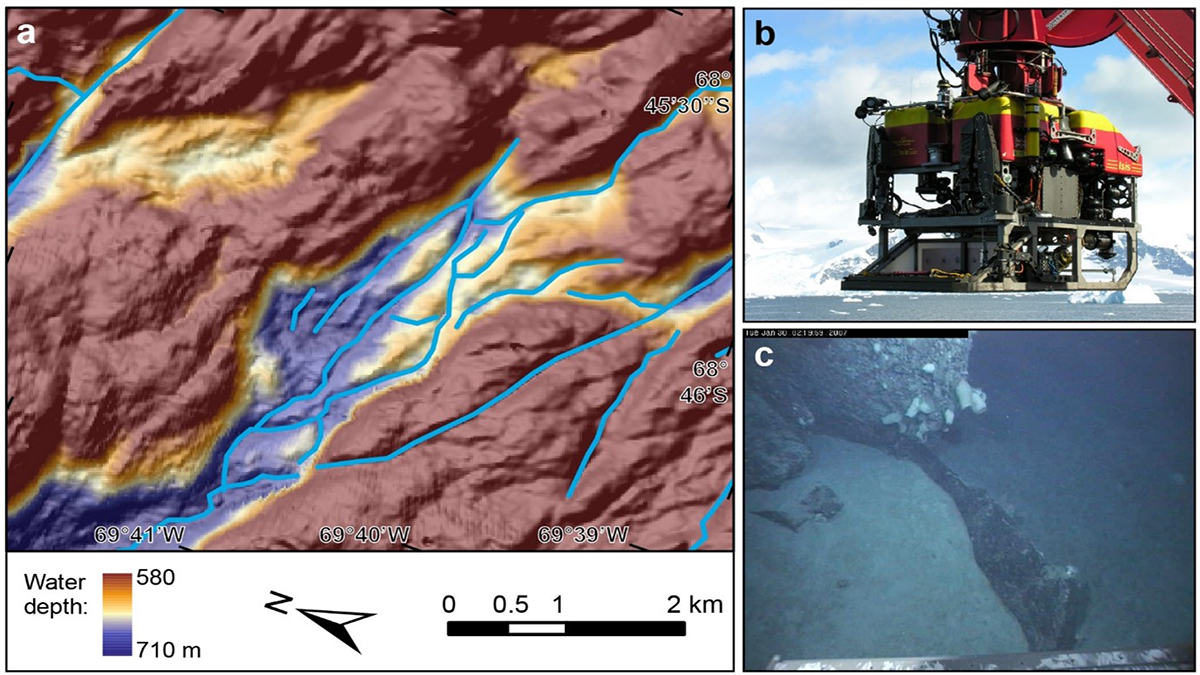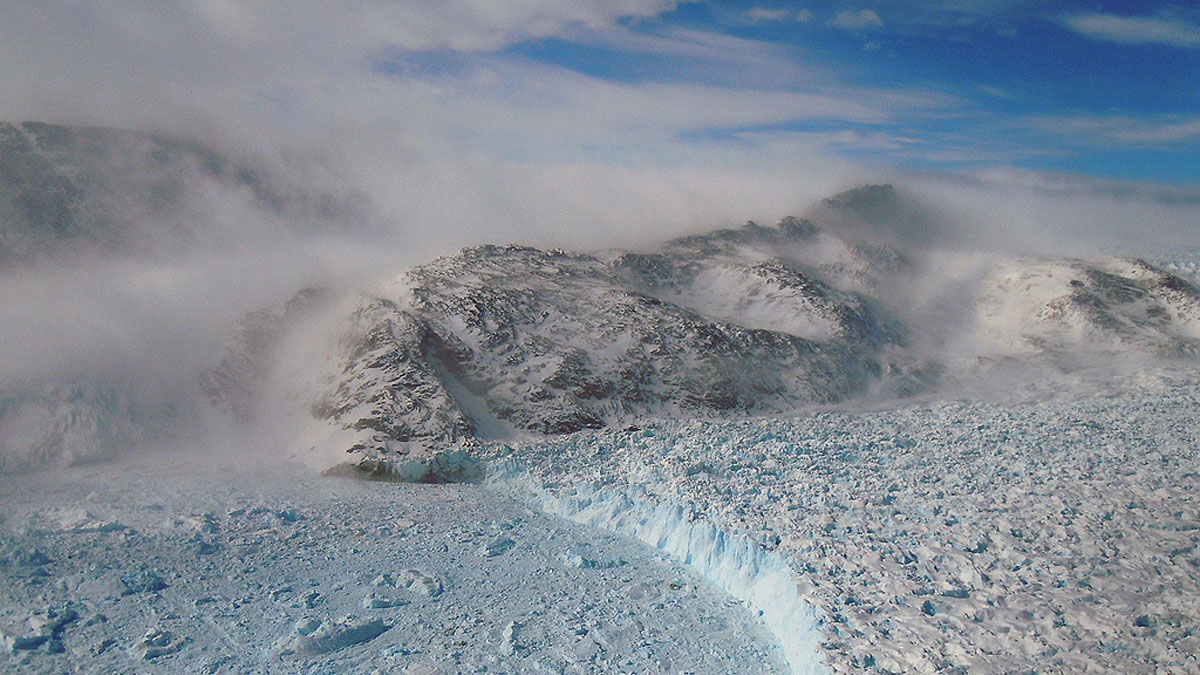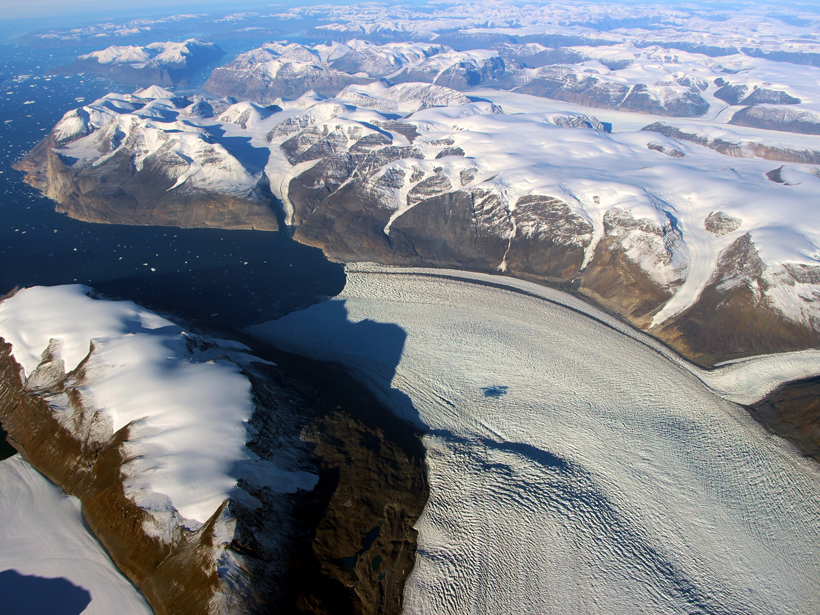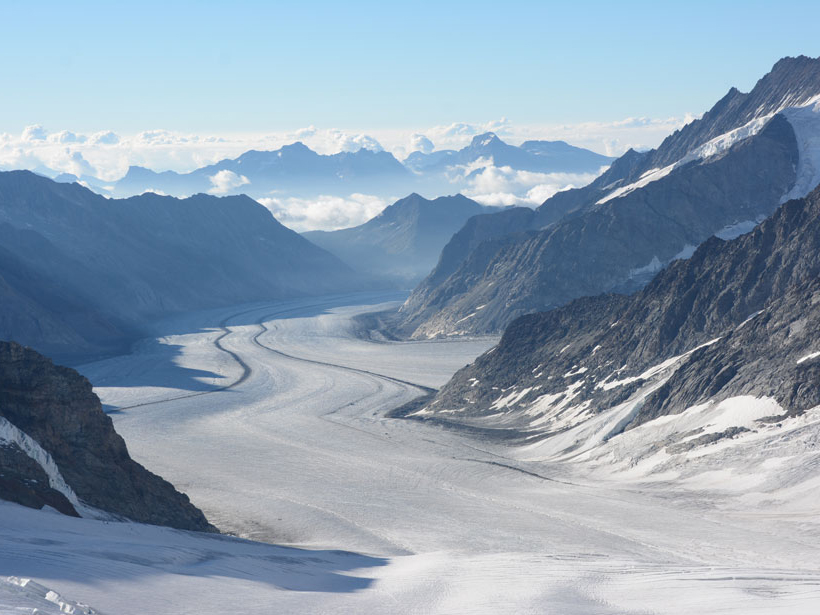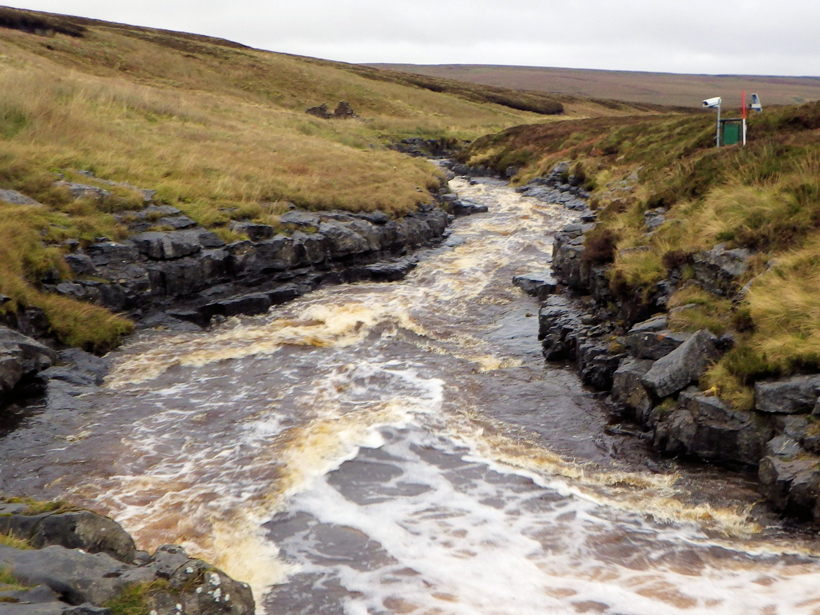Analyses of new shipboard and ROV observations of bedrock channels carved by floods and outbursts from subglacial lakes under Antarctica shed light on complex subglacial processes.
bedrock
Posted inNews
“Sticky” Ice Sheets May Have Led to More Intense Glacial Cycles
New research attributes a shift to longer, stronger glacial cycles to increased friction between ice sheets and bedrock in the Northern Hemisphere 1 million years ago.
Posted inResearch Spotlights
Massive Waves of Melting Greenland Ice Warped Earth’s Crust
A novel method uses shifting bedrock to trace pulses of mass that propagate down a glacier.
Posted inResearch Spotlights
Cosmic Muons Reveal the Land Hidden Under Ice
Scientists accurately map the shape of the bedrock beneath a glacier using a new technique.
Posted inResearch Spotlights
How Do Rivers Flow over Bedrock?
A study questions whether the hydraulics of rivers that lack loose sediments along their bottoms can be accurately depicted by standard equations for flow over sediment.
Posted inResearch Spotlights
Largest Grains Dominate River Bedrock Erosion Rates
The effect of particle size on bedrock erosion rates adds complexity to modeling bedrock channel evolution.

